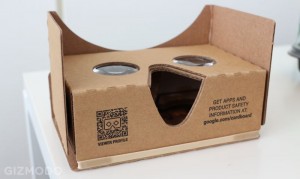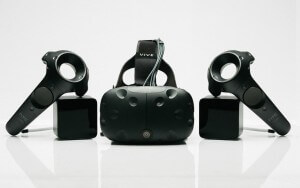Virtual Reality: representing opportunities for product development
Never one to shy away from technological developments, we had a finger firmly on the pulse of virtual reality recently.
Courtesy of VR gaming company, Fragers Ltd, who offer portable VR booths and double decker gaming buses, we left the real world behind as we stepped into a virtual reality and tried out the latest experiences. We won’t lie to you, it was an amazing experience and, dare we say, incredibly fun!
Using HTC Vive, a relatively high end but reasonably affordable VR technology, we were able to fully immerse ourselves in a variety of different experiences from walking on the ocean bed to floating among the stars and planets of our solar system. The experiences were as realistic as our screams of terror evoked by the zombies we battled!
This all sounds the complete opposite of all work and no play, and while we won’t deny the enjoyment we got from the ‘play’ aspect, there is a place for VR in the world of product development.
More on that later; firstly though, let’s take a look at the VR technology itself.

Google goggles
Although not a new technology, VR is understandably thriving in the gaming community. The interest from the gaming world has driven VR forward and as such there are plenty of gamers using Samsung and Google goggles.
These entry-level solutions allow the user to insert their smartphone into their VR goggles to explore outer space or dance on stage with their favourite artists or even enjoy a cinematic experience where no seat is a bad one. The field of view offered by these solutions is 96°.
Moving on from the entry level solutions there is the Oculus Rift, which offers a field of view of 110°. The Rift allows the user to interact with virtual experiences through the use of a remote, an integrated VR radio which brings the sounds closer to the experience and a constellation tracking sensor enabling the software to track your movements. The Rift also comes with an Xbox One wireless controller for a true gaming experience.
Unlike the entry level VR models that use smartphones to generate the experiences, the Rift uses a PC as its engine ensuring good performance of games and experiences.

HTC Vive
The technology we used for our experience was the HTC Vive. Although at the higher end of the market, the technology is becoming more affordable and, like the Rift, it offers a full 110° field of view.
Experiences for the HTC Vive are loaded onto a high spec PC and sent to a headset which has 32 sensors enabling 360° motion tracking. Its high refresh rate delivers ‘eye popping’ graphics and, with the headphones on, you won’t know what’s real and what’s virtual.
The HTC Vive is in great demand. At the time of writing, there are only around 1,000 of them in the UK and there is a waiting list of two months.
With ever improving quality, eliminating glitches and juddering, along with the ability for games to resize according to the size of room and to be played by two or more people remotely, its attractiveness is understandable. In addition, with around 50 new VR games and experiences coming to market every day, consumers are like children in a sweet shop!
But how can this predominantly gaming technology cross over into product development?

HTC Vive – in action
Due to the high costs involved there have been very few genuine business applications of VR as yet, other than at the multinational corporate level. Like most ‘new’ technology, VR technology is going through the high cost, low adoption curve.
However, now that the technology offers HD combined with VR, it’s starting to have an impact. It is evident that corporates such as car manufacturers and aerospace companies are already dipping more than a toe in the VR pool. Only this week Popular Science reported on NASA’s new virtual experience, where virtual tourists walk on the surface of Mars, and where scientists are able to create detailed maps of the surface, assist with operations planning and collect data.
In terms of commercial applications for product design and product development, the potential is only as limited as the ideas.
For instance, with VR, product designers and their clients can potentially see inside the cars, ships and planes that they are prototyping. They could pick them up, in the virtual sense of the word, turn them over and test them robustly.

Human anatomy: real image taken through HTC Vive headset
With detailed scans of the body, it would be possible to ‘go inside’ a body allowing doctors and surgeons to see the real anatomy of a patient. Maybe it would be possible to even understand where a disease has manifested and how it is developing in order to swiftly diagnose and effectively treat a patient.
A recent study, funded by the Medical Research Council, has found that virtual reality simulations can treat patients with severe paranoia by allowing them to face situations they fear. The positive effect of this is how it enables them to realise their fears are actually safe.
It is also conceivable that VR could be used greatly in tourism enabling prospective holiday makers to see and experience their ideal destinations. They could visit attractions such as ruins, underground chambers, caves and more in a more sophisticated way than existing virtual reality tours offer.
We’re really excited to see the evolution of VR, in particular in product design and development, and will continue to liaise with Fragers as the technology develops. There are endless ways in which VR could be applied and we’re keen to see how VR could integrate into the design cycle in the future. It’s entirely possible that virtually anything could be a reality.
Want to realise your own design? Get in touch with us to see how we could work together.




